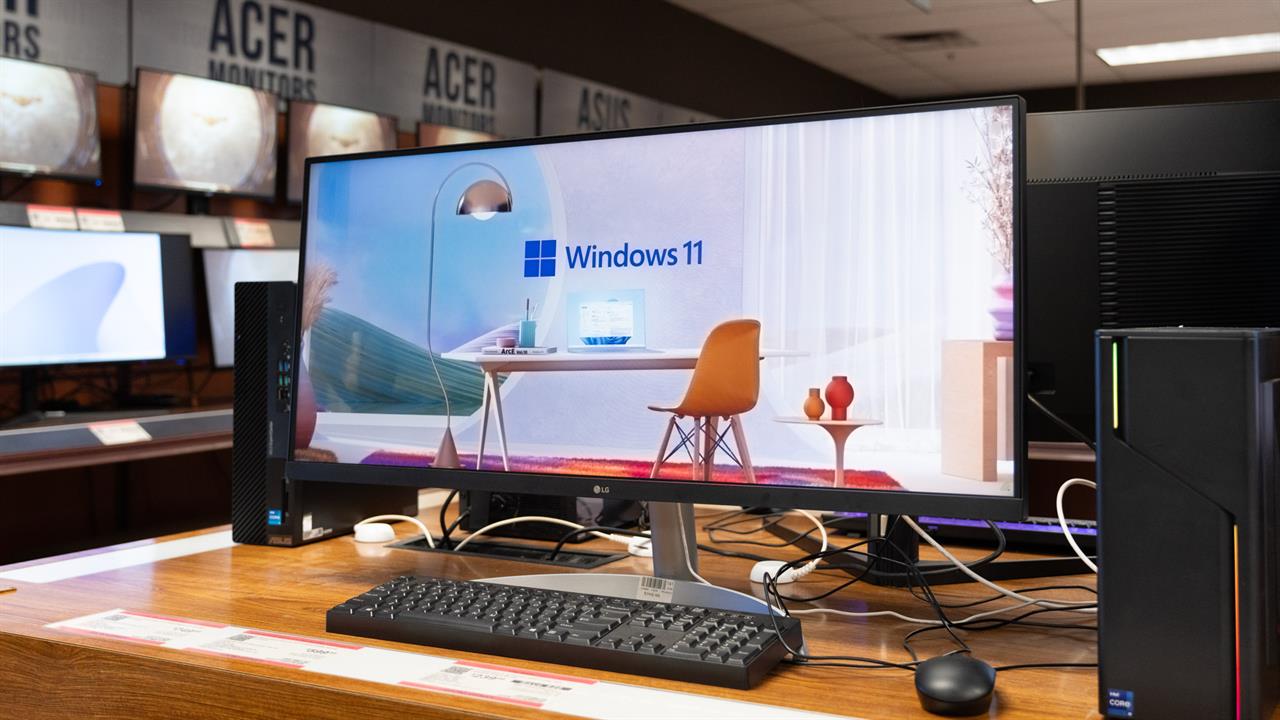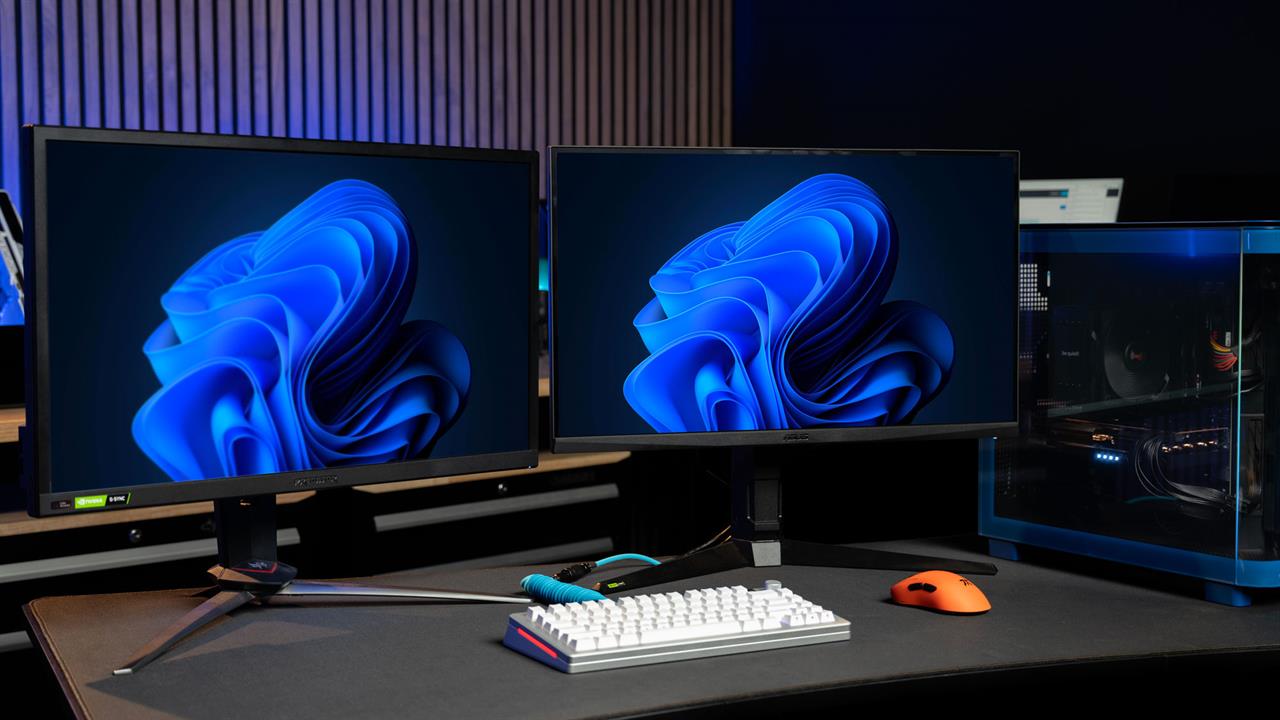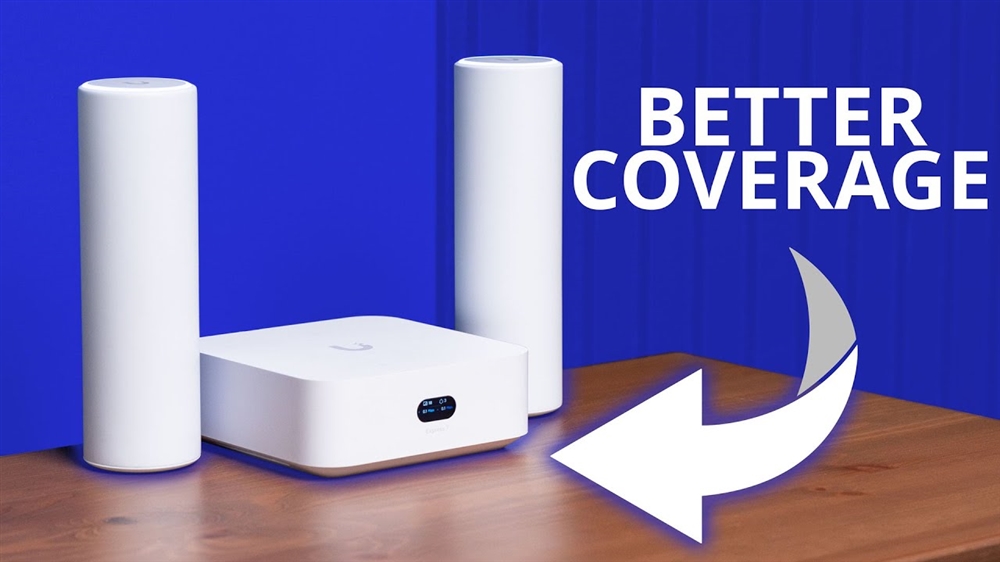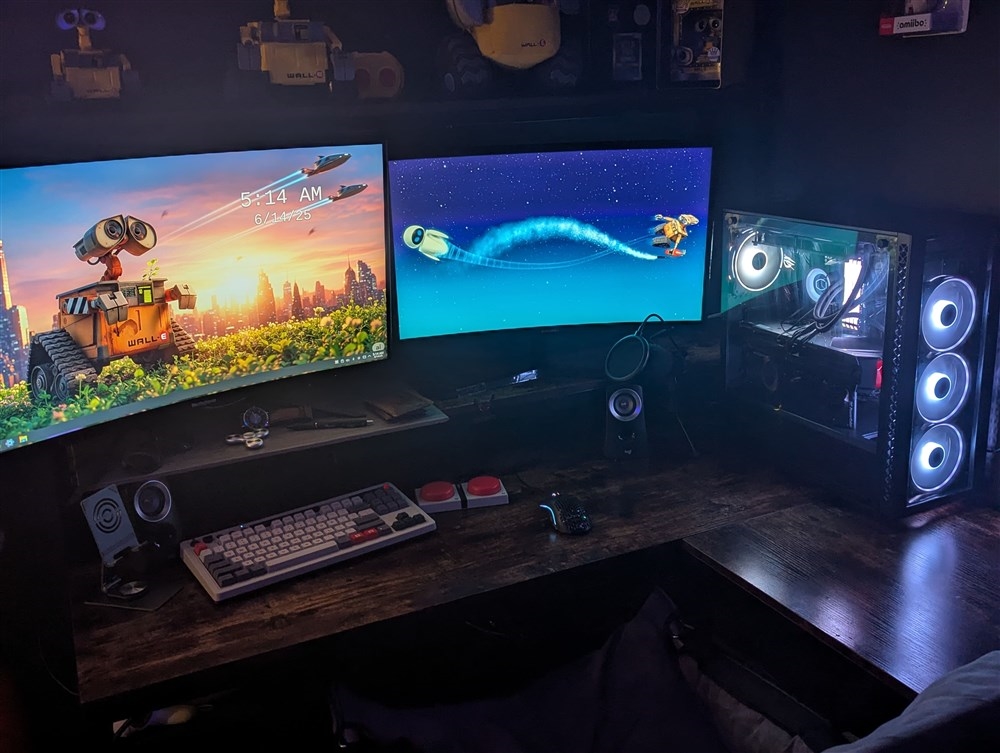Dual Monitors vs. Ultrawide: Discover Which is Best for Your Workspace
Do you need two monitors or one really big one? We explore the options.Buying Guides
Master multi-taskers obsessed with productivity used to have one choice for expanding the display real estate in front of them: buy more widescreen monitors.
 Photo: Jacob Bobo
Photo: Jacob Bobo Over the past five years, however, ultrawide monitors have gained popularity and positioned themselves as a legitimate alternative to a dual-screen setup. But that doesn’t mean the classic dual-screen setup is no longer useful, and it’s often still the best choice.
So, which should you pick?
Understanding the basics
A dual monitor setup includes two individual displays, often (but not always) identical in size and resolution. In most cases, each display is a widescreen monitor with a 16:9 aspect ratio and a diagonal display size of 24, 27, or 32 inches. But people serious about their home office setup might opt for a more unusual monitor like the LG Dual-Up, which is nearly square.
An ultrawide monitor is a single, expansive screen with a wider aspect ratio—typically 21:9 or 32:9—that delivers more horizontal real estate. Most ultrawide monitors measure 29, 34, 40, or 49 inches diagonally.
Visualizing the size of widescreen and ultrawide monitors can be difficult, but there’s a few easy comparisons.
- A 29-inch ultrawide with a 21:9 aspect ratio is as tall as a 24-inch widescreen and about 30% wider.
- A 34-inch ultrawide with a 21:9 aspect ratio is as tall as a 27-inch widescreen and about 30% wider.
- A 40-inch ultrawide with a 21:9 aspect ratio is as tall as a 32-inch widescreen and about 30% wider.
- A 49-inch super-ultrawide with a 32:9 aspect ratio is roughly as tall and wide as two 27-inch widescreens placed side by side.
Still not able to picture it? Check out Display Wars, a handy website that lets you directly compare the size of two displays.
Dual monitors offer easy display space, ultrawides offer simplicity
A dual-monitor setup with two widescreens is simple and inexpensive. There’s no need to buy a monitor arm or a wide desk. So long as each widescreen monitor has height adjustment (and most priced above $150 do), you can use the stands each monitor ships with, adjust their height to match, and you’re done. Many widescreens also have a stand that can rotate the monitor 90 degrees into a portrait orientation, which adds versatility. That’s not an option with an ultrawide.
Yes, you technically can place two 34-inch ultrawide monitors side-by-side, but you’ll need a truly gigantic desk to accommodate it. It’s also possible to mount one ultrawide above the other, but only with an expensive monitor arm built for that purpose.
However, ultrawide strikes back in one key area: clutter or, rather, the lack of it. A pair of widescreens delivers a lot of display for the price, but using two monitors means dealing with two monitor stands, two sets of power cables, and (usually) two sets of cords from your computer to the monitors.
Using a single ultrawide halves all of that. And if you buy an ultrawide with a USB-C or Thunderbolt connection that supports DisplayPort Alternate Mode and USB Power Delivery, you can use the monitor itself as a dock for your laptop. If you do so, you can get by with as little as two cords: a power cord for the ultrawide and a USB-C cable connecting your laptop to the ultrawide. Home office minimalists will find that hard to pass up.
To bezel or not to bezel
The choice between dual monitors and an ultrawide will also depend on why you want the extra display space.
A dual monitor is great if you want to have eight open windows snapped into a grid with four on each screen. Most computer software is designed on the assumption it will be viewed in a 16:9 aspect ratio, or something close to it. Because of that, windows look better snapped to the corners of a widescreen monitor than they do on an ultrawide. Ultrawide users can adjust for this by customizing the size of open windows, but it takes more effort.
If you want to view a single window across the entire display area without interruption, though, dual monitors just won’t do.
Video editing is the classic example. Most video editors have a horizontal editing timeline. A dual monitor setup isn’t ideal here, as trying to stretch the video editor across both displays means dealing with a bezel right down the middle of the software. An ultrawide’s single wide, bezel-free display is far better suited for the task, even if opting for the ultrawide leaves you with less display space overall.
Gamers love ultrawides for the same reason. It’s possible to use two monitors side-by-side with graphics driver features like AMD’s Eyefinity, but it’s never ideal, and using dual monitors in a first-person shooter sticks a bezel right in the middle of your crosshair. Ultrawides are also great for movies filmed in a 21:9 aspect ratio, or a ratio close to it, since you can view the movie with little or no letterboxing.
 Photo: Jacob Bobo
Photo: Jacob Bobo Other things to consider
Picture-in-picture modes: Ultrawide works better if you want to use picture-by-picture or picture-by-picture modes to view multiple display inputs on a single display. Widescreen monitors often support these modes, but an ultrawide offers more room to squeeze in the second input.
Mixed display sizes: As mentioned, dual monitor setups can include a mix of display sizes. That’s handy if you prefer a large “main” display flanked by a smaller widescreen (like a 19 to 24-inch monitor) to view chat channels and social media.
Curved screens: Most ultrawide monitors have a curved screen, which complicates their use in dual-monitor setups. Placing two curved ultrawides side-by-side is only practical on large corner desks. Placing one above the other might work, but only if the curve of each is the same. A handful of ultrawides provide a flat screen, though, including the two I recommend below.
Weight: Most 24 to 32-inch widescreens have a display panel that weighs around 10 pounds (without the stand). Ultrawides are a few pounds heavier. That’s important to know if you plan to use a dual monitor arm. You’ll need a sturdier arm to handle ultrawide monitors than is needed for widescreen monitors.
Recommended monitors
A good widescreen monitor doesn’t need to be expensive, so buying two isn’t out of the question even if you’re on a budget. Here’s a few options that will work for most home office setups.
Acer CB272 E3bmirux: This value-priced 27-incher has a stand that adjusts for height, tilt, swivel, and pivot, which makes it easy to set up alongside another monitor.
MSI Modern MD2412PW: This 24-inch MSI is good for dual-monitor setups on small desks. Like the Acer, it also has a stand that can adjust for height, tilt, swivel, and pivot.
Ultrawide monitors are generally more expensive than widescreens, but prices have dropped in recent years.
LG 34WP50S-W: This basic 34-inch ultrawide has a flat panel and good image for just $250.
MSI MAG401QR: Though pitched as a gaming monitor, the MAG401QR is a good pick for the home office. It has a huge 40-inch widescreen display, supports USB-C with up to 65 watts of Power Delivery, and has a flat (instead of curved) panel.
Read more: PC laptop and desktop resources
See top new laptops at Micro Center
See top new desktops at Micro Center
See top new GPUs at Micro Center
See top new CPUs at Micro Center
Start building a new PC with Micro Center's PC builder
Matthew S. Smith is a prolific tech journalist, critic, product reviewer, and influencer from Portland, Oregon. Over 16 years covering tech he has reviewed thousands of PC laptops, desktops, monitors, and other consumer gadgets. Matthew also hosts Computer Gaming Yesterday, a YouTube channel dedicated to retro PC gaming, and covers the latest artificial intelligence research for IEEE Spectrum.
Comment on This Post
See More Blog Categories
Recent Posts
Watch: Micro Center Studio Mesh Networking Makeover With Ubiquiti
It's project day at the Micro Center Studio! Jordan and Jacob are here to redo the studio Wi-Fi to boost the range and get full signal across our warehouse workshop.
Continue Reading About Watch: Micro Center Studio Mesh Networking Makeover With Ubiquiti










